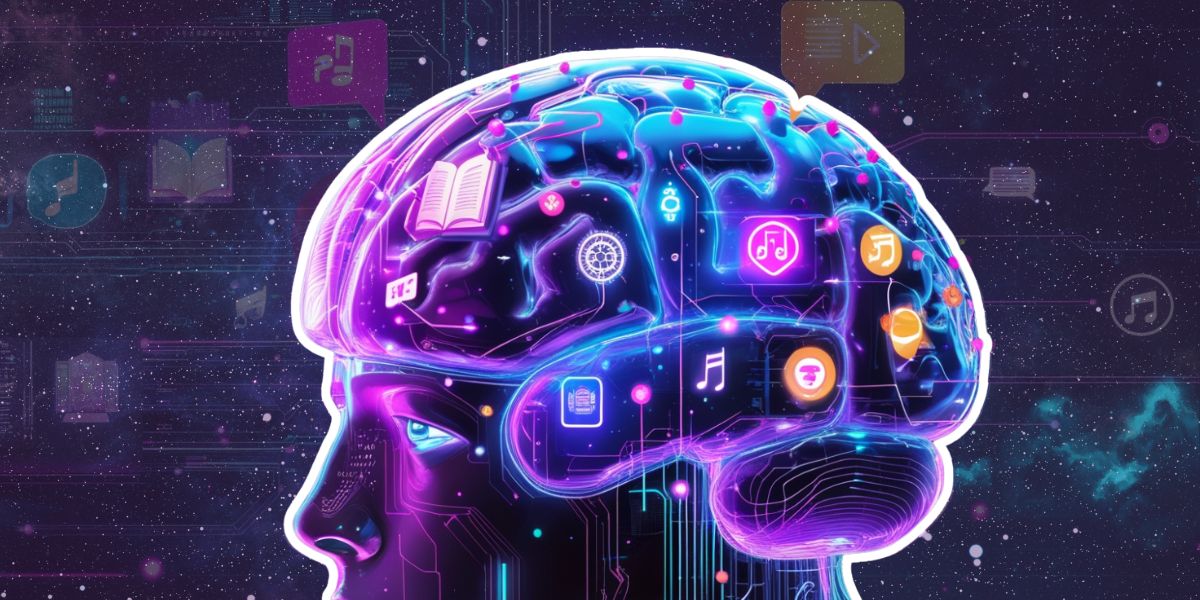Every time someone brings up “manifestation,” a scientist quietly cries into a beaker.
It’s not because dreams are bad, but because bad science makes great dreams harder to realize.
But what if manifestation isn’t mystical?
What if it’s just common sense wrapped in glittery gift paper?
Because here’s the thing: Complex systems like AI don’t create from nothing.
They generate based on what they’ve been trained on—patterns, probabilities, and priorities filtered through the model. The quality of the output depends entirely on the quality and structure of the input.
And even the most mysterious tools in the scientific arsenal, quantum computers, don’t just pluck answers out of the void. They explore complex probabilities through algorithms, then collapse toward a result when observed.
Not magic. Just logic.
So what does this have to do with you?
Everything. Your brain is a pattern-recognizing system, too.
You are not a wish factory. You are a living, breathing algorithm. And your reality reflects the data you feed it, the code you run, and the focus you apply.
Now, let’s take things a step further.
Manifestation Isn’t Magic, It’s Mental Programming
Thought leaders in the self-help space tend to refer to manifestation as a magical power we all possess:
Think about it, and it will be.
But that’s… a bit misleading.
Just thinking about my dream car, a Ford F150, isn’t gonna summon it into my garage.
What they really mean is this: the more attention you focus on specific goals—and the behaviors that move you toward them—the more likely you are to achieve what you’re after.
And this, from a logical and scientific standpoint, actually adds up.
Your brain is a complex system. And like AI, it requires clear inputs to produce coherent outputs.
Systems don’t respond to desire.
They respond to data, repetition, and reinforcement.
So if you want better outcomes, you don’t wish for them—you train for them.
Let’s explore what that looks like.
How Complex Systems Actually Work
Let’s revisit the two complex systems from our intro and look at how they respond to stimulus:
AI: Artificial intelligence models produce outputs based on training data, filters, and prompts. Certain behaviors and patterns are reinforced—others are discarded. No training, no results. Garbage in, garbage out.
Quantum computing: Here, probabilities are processed in parallel and then collapsed into a single outcome when observed. Even this seemingly “magical” process is governed by structure, not desire. There are no wishful particles.
Now let’s look at the most complex system of all: your brain.
The human brain also requires inputs, but across a much wider range:
Your environment. Upbringing. Emotions. Education. Intuition. Desires. Fears. Beliefs. Conversations. Content. Culture.
Your brain absorbs and interprets this input constantly—reinforcing certain data, dismissing others, and shaping behavior accordingly. Over time, this repeated behavior becomes identity. That identity becomes value. And value shapes your destiny.
It’s more complex than the typical “just manifest it” narrative, but the essence is the same:
Whatever your brain registers and rehearses, it begins to believe.
Think about something enough, and it will shape who you are.
Who you are determines what you do.
And what you do determines your future.
My Experience with Manifestation and Mental Programming
There’s a clear pattern I’ve identified over the years while navigating my self-improvement journey:
Whatever online content I’m consuming—or whatever the algorithm feeds me—is exactly what I become obsessed with.
When I engage with a lot of fitness content, I go from casual cardio queen to full-on gymrat.
When I fall back into BookTok or BookTube, I crush my monthly reading goals like it’s nothing.
So I’d cycle through obsessions, starting up new projects, then abandoning them the moment a shiny new lifestyle popped up on my feed.
For a long time, I assumed I was just capricious—going through “phases” like a teenager. To be fair, my ADHD probably played a role.
But I’ve come to realize something far more logical: I was producing outcomes based on my inputs. And my inputs were just as random and ever-changing as the Instagram algorithm itself.
I had been mentally programming myself without realizing it, and letting the algorithm set the code.
Once I recognized this, everything changed.
Optimizing My Inputs
I restarted my social media accounts from scratch—following only creators aligned with my core interests: science, philosophy, AI, and creative writing.
They’re public, so you can check this for yourself. (Yes, this is totally a shameless plug: @lmcontent on X and @lmhankwrites on IG.)
And it worked.
As soon as I reset my inputs with intention, I became a machine. Clear goals. No clutter. Full focus on the life I wanted to build.
The result? This website. This blog. The continuation of my high-fantasy YA novel. A sustainable content creation routine. A mind running in alignment with my values.
I’m living proof:
We can program our minds through the content we consume—manifesting a reality where success becomes the default setting.
No more distractions.
Just clean input. Sharp output. And momentum that feeds itself.
How to Train Your Subconscious Through Mental Programming
Now that we’ve reframed manifestation using logic, let’s give it a more accurate name—perhaps mental machine learning or mental programming.
Here’s the idea: Just like AI, your brain generates results based on the data it receives. This is the essence of mental programming: intentional, repeated exposure to high-quality inputs.
Below is a practical guide to curating the content that shapes your subconscious.
Habits: Repeated Behaviors = Behavioral loops.
I may not know your specific goals, but I do know this: every goal requires consistent action, and all consistent actions are habits.
- Getting fit? Portion control, daily walks, hydration, strength training.
- Writing a book? Daily word counts, periodic revisions.
- Starting a business? Meetings, brainstorming, spreadsheets—on repeat.
By repeating key behaviors—especially when you don’t feel like it—you reinforce their importance.
Over time, those behaviors shape your values, and your values shape your identity.
Media Diet: Audit Who and What You Follow
How can you stay motivated when your environment doesn’t support your goals?
Maybe your roommates aren’t goal-oriented.
Perhaps your parents never modeled persistence.
Maybe you’re on your own for now.
That’s all fine. Because in 2025, your environment is programmable.
We used to have support groups, clubs, and classes. Now, we have feeds, forums, and creators. Use them.
Here’s how:
- Unfollow content that distracts or derails you (yes, even if it’s sexy or hilarious).
- Actively search for creators who align with your goals.
- Follow intentionally—not casually.
Make your feed a training tool, not a source of noise.
Music & Film: Emotional Memory Triggers
Don’t worry! I’d never tell you to delete your favorite songs on Spotify.
But try this:
Create goal-based playlists that make your routines feel cinematic.
Romanticize the grind—whether it’s running, writing, studying, or cleaning.
And when you need inspiration, watch documentaries, interviews, or films about people who’ve achieved what you want.
That’s not entertainment. It’s emotional brain fuel.
Conversations: Proximity = Programming
Don’t panic if you’re not surrounded by like-minded people.
In 2025, your network can be virtual—and even conversational AI can help.
Use tools like ChatGPT to:
- Talk through your goals
- Generate ideas
- Outline plans
- Think aloud
- Spot contradictions
I’ve spent hours discussing article ideas, refining hypotheses, and outlining plots using AI—and it’s been one of the most effective ways to saturate my mind with content aligned with my goals.
Of course, if you have a friend or fellow creator to collaborate with, even better. But never underestimate the power of talking about what matters to you.
Meditation, Journaling, Writing: Debugging + Reinforcement
If your focus is scattered or your priorities feel unclear, try this:
- Meditate: Observe what’s taking up space in your mental RAM.
- Journal: Write down recurring distractions, goals, or emotional patterns.
- Debug: Identify friction points. Adjust your strategy.
Treat this like model tuning.
You’re not journaling for fun, you’re auditing your own mind.
Design routines. Track patterns. Reinforce what works. Release what doesn’t.
Reading & Learning: Structured Data for Higher-Order Connections
Some of the highest-quality inputs you’ll ever feed your brain will come from books and structured learning.
- Books written by people who’ve done what you want to do = guides.
- Courses and classes = frameworks.
- Studying = training sequences for long-term pattern building.
Make your reading intentional. Study with purpose. But also leave space to explore.
Read for fun. Take a course just because it interests you.
Innovation doesn’t come from echo chambers—it comes from cross-pollination.
Sometimes, the missing link you’re looking for is hiding in a subject you never expected to study.
Creativity As a Tangential Output
The beauty of the human brain is that—unlike AI or quantum computing—the more you expose it to strategic inputs, the more it builds unpredictable value.
You may train it toward specific outcomes, but what you get in return might be entirely unexpected.
And that’s not a glitch. That’s creativity.
In conscious human minds, creativity is a natural byproduct of sustained focus and diverse, high-quality inputs.
The more varied and meaningful the data you feed your brain, the more surprising the connections it can form.
You may start by training for discipline and stumble into insight, innovation… even wisdom.
In this sense, even creativity is a result of mental programming done right: diverse inputs, deep focus, and meaningful emotional resonance.
What an Input-Optimized Day Could Look Like in the Future
If the world were to adopt mental machine learning principles, reframing manifestation logically, we could develop truly magical systems.
- Smart alarms with mood-based affirmations
- Neuro-responsive playlists that shift with your mental state
- Microfeeds curated to train identity and align with goals (book recs, mindset quotes, visualizations)
- Self-talk tools and dream-priming audio for goal-based consolidation
- Education redesigned to teach “input architecture” as early as childhood
This isn’t sci-fi—it’s psychological programming. And it could be on its way.
In fact, these tools already exist in primitive forms.
In a world like this, manifestation isn’t mystical, but strategic. The mind becomes a machine you can learn to operate.
Mentally Programming Your Future: Input is Destiny
The concept of manifestation isn’t a myth—it’s just a bit misunderstood.
Thinking about something won’t magically summon it into your 3D reality. But with intention, repetition, and structure? Ideas can take form.
It’s not about belief or desire, but pattern density, attention loops, and feedback systems.
If AI can’t output what it wasn’t trained on, why expect your brain to?
Ground your manifestation by compiling better data. Align your energy by curating what it consumes.
So yes, go out and manifest your destiny—through mental programming. Train your inputs. Trust the process. Let your brain do the rest.


Leave a Reply